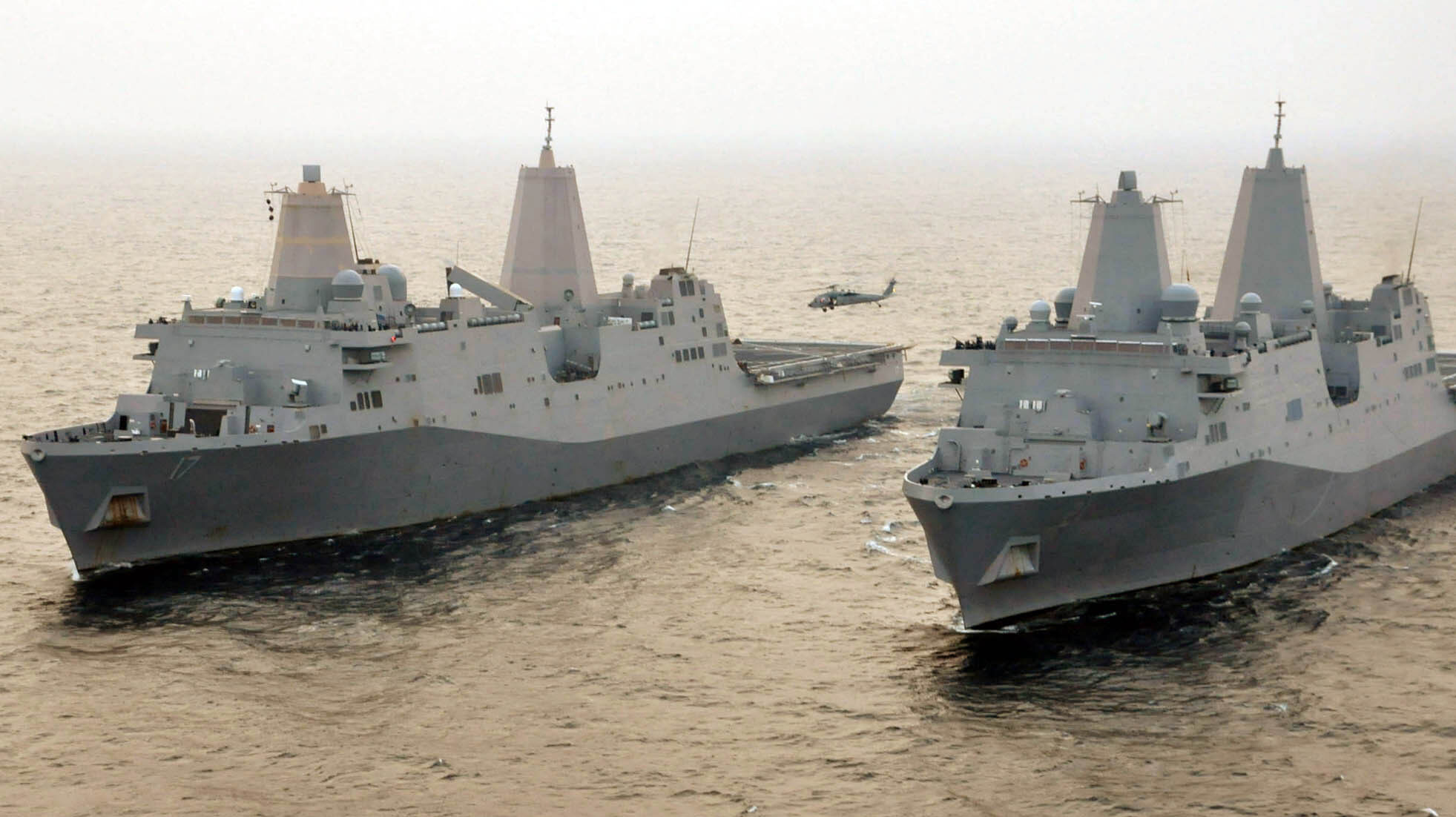
The amphibious transport dock ships USS San Antonio and USS New York are underway together in the Atlantic Ocean off the coast of Virginia. (U.S. Navy photo by Petty Officer 1st Class Edwin F. Bryan)
WASHINGTON — The future amphibious warship fleet — and its productions line — are in peril of being sunk by budget politics. And the Marine Corps is ready to fight about it.
“Without a programmed replacement for [dock landing ships] being decommissioned, substantial risk falls on the combatant commander as the requirement for 31 ships will not be met,” Maj. Joshua Benson, a spokesman for the service’s three-star general in charge of combat development and integration, told Breaking Defense today. “This is unacceptable.”
The Navy’s new fiscal 2024 budget request follows up on previous comments from Navy Secretary Carlos Del Toro, who has said the service will take a “strategic pause” in purchasing new amphibious warships, which are designed to ferry Marines and their equipment into strategic locations where they can deploy from ship to shore. At the time, Del Toro said the pause was so the Navy can consider both how many ships it needs as well as the capabilities onboard those vessels.
Speaking to reporters ahead of the budget rollout, Navy Undersecretary Erik Raven declined to answer several questions about the pause, instead thanking for Congress for its support in the previous budget and promising to work with industry and the Hill moving forward.
FULL COVERAGE: What’s in the Pentagon’s budget? Here’s what to know.
During an event on the Hill last week, Commandant Gen. David Berger also declined to explain the logic behind the “strategic pause,” saying it was Del Toro’s place to articulate the administration’s position. But he was blunt about the risk in not meeting what the Marines say is a minimum of 31 amphibious ship fleet, a figure backed up by a recent joint Navy-Marine Corps assessment delivered to lawmakers.
“The inventory is going to go down, the risk is going to go up,” he said then. “The risk meaning our ability as a nation to respond when needed, and sometimes you can’t predict that the risk goes up — that a combatant commander doesn’t have the right tool for the job. That’s the risk.”
But the new comments from the Marine Corps’ three-star command in charge of developing warfighting technologies represent major, public push-back against the Pentagon’s formal request.
In follow up comments today to Breaking Defense, Benson emphasized that risk, citing the ongoing humanitarian crises in Turkey prompted by multiple earthquakes.
“The ongoing humanitarian disaster in Turkey is the most recent example of a situation that would benefit from the capabilities organic to an [amphibious ready group/ Marine expeditionary unit]. Unfortunately, no operationally deployable amphibious warfare ships were available,” said Benson.
RELATED: Thanks to Ukraine, Pentagon eyeing multi-year munition buys in FY24
In terms of the industrial base, the Marine Corps views the “strategic pause” as putting its ship production lines at risk of completely shutting down. “Depending on the length of the pause,” Benson said shipyards may be forced to cut their workforce, losing “years of experience that have been carried forward from keel to keel.”
“If a shipbuilder is forced to make these decisions due to forecasted gaps in production, re-starting a line becomes much more expensive,” he added.
Heckl, and other Marine Corps brass, recently visited several Navy shipyards in the Gulf Coast region ahead of the new budget being unveiled.
“If [San Antonio-class amphibious transport docks] Flight II is not programmed, then the amphibious warfare ship industrial base will be forced to reduce the workforce starting in FY27,” said Benson.








